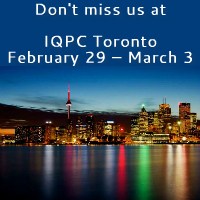 Mesa Laboratories, Inc. (NASDAQ:MLAB) (we, us, our, “Mesa” or the “Company”) today announced the acquisition of Infitrak Inc. and its holding company, 2396081 Ontario Inc. (collectively “Infitrak”), located near Toronto, in Markham, Ontario.
Mesa Laboratories, Inc. (NASDAQ:MLAB) (we, us, our, “Mesa” or the “Company”) today announced the acquisition of Infitrak Inc. and its holding company, 2396081 Ontario Inc. (collectively “Infitrak”), located near Toronto, in Markham, Ontario.
Under the terms of the transaction, we acquired all of the outstanding shares of common stock of Infitrak, whose business involves providing consulting, packaging and measuring solutions for cold chain applications. The acquisition price for Infitrak consisted of cash consideration of $12,000,000 CDN (approximately $9,600,000 USD) which is subject to a minor working capital adjustment, and a future contingent payment of up to $15,000,000 CDN (approximately $12,000,000 USD), based on the growth of Infitrak’s cold chain business during the first two years following the acquisition. The acquisition of Infitrak is expected to add approximately $5,500,000 to Mesa’s revenues and to be accretive to our diluted net income per share during the first twelve months.
A “cold chain” is a supply chain for temperature sensitive substances involving an uninterrupted series of storage and distribution activities which maintain a given temperature range from point of manufacture or collection to point of use. Cold chains are primarily used within the pharmaceutical, healthcare, and food industries, although there are some smaller markets in other industries. Infitrak’s product offerings consist of:
- Consulting services such as compliance monitoring, packaging development and validation or mapping of transport and storage containers.
- Thermal packaging products such as coolers, boxes, insulation materials and phase-change products to control temperature during transport.
- Parameter monitoring (primarily temperature) of products in a cold chain using data loggers and other indicators.
- Data management and software which provide documentation and alerts.
Going forward, Infitrak will continue its operations from the Markham facility, expanding its focus beyond Canada to the U.S and other markets. The Infitrak management team will remain with the Company, helping to drive growth of the business.
“Cold chain markets are expanding worldwide and we are excited about adding Infitrak’s offering to Mesa’s portfolio of products,” said John J. Sullivan, President and CEO of Mesa. “Infitrak’s strategy is unique in the industry, offering a complete suite of solutions, including cold chain services, package assessment and design and real time data monitoring. Infitrak’s business has been expanding rapidly in recent years and, by leveraging Mesa’s resources and contacts in the pharmaceutical industry, we are looking forward to continued rapid growth as we take their business model from Canada into the U.S. market. Cold chain products fit very well with Mesa’s market focus, as they are used mainly in regulated markets for maintaining quality products, and they complement our DataTrace and Continuous Monitoring product lines. I look forward to working with the entire Infitrak team as we execute our strategy to grow the business in the U.S. and beyond.”
“We are thrilled to join a quality organization like Mesa and continue to grow our cold chain product and service offerings”, commented the three shareholders Jean Bedard, Karl Giamov and Ryan Sanders. “This will provide us with a great opportunity to expand our business into the U.S. and other territories rapidly. We will continue to produce quality products and services to help customers with their regulatory cold chain needs.”
We pursue a strategy of focusing primarily on quality control products, which are sold into niche markets that are driven by regulatory requirements. We prefer markets that have limited competition where we can establish a commanding presence and achieve high gross margins. We are organized into four divisions across seven physical locations. Our Instruments Division designs, manufactures and markets quality control instruments and disposable products utilized in connection with the healthcare, pharmaceutical, food and beverage, medical device, industrial hygiene, environmental air sampling and semiconductor industries. Our Biological Indicators Division manufactures and markets biological indicators and distributes chemical indicators used to assess the effectiveness of sterilization processes, including steam, hydrogen peroxide, ethylene oxide and radiation, in the hospital, dental, medical device and pharmaceutical industries. Our Continuous Monitoring Division designs, develops and markets systems which are used to monitor various environmental parameters such as temperature, humidity and differential pressure to ensure that critical storage and processing conditions are maintained in hospitals, pharmaceutical and medical device manufacturers, blood banks, pharmacies and a number of other laboratory and industrial environments. Our Cold Chain Division provides parameter monitoring of products in a cold chain, consulting services such as compliance monitoring, packaging development and validation or mapping of transport and storage containers, and thermal packaging products such as coolers, boxes, insulation materials and phase-change products to control temperature during transport.
Forward Looking Statements
This press release may contain information that constitutes “forward-looking statements.” Generally, the words “believe,” “expect,” “project,” “anticipate,” “estimate,” “intend,” “will” and similar expressions identify forward-looking statements, which generally are not historical in nature. However, the absence of these words or similar expressions does not mean that a statement is not forward-looking. All statements that address operating performance, events or developments that we expect or anticipate will occur in the future — including statements relating to revenue growth and statements expressing general views about future operating results — are forward-looking statements. Management believes that these forward-looking statements are reasonable as and when made. However, caution should be taken not to place undue reliance on any such forward-looking statements because such statements speak only as of the date when made. We undertake no obligation to publicly update or revise any forward-looking statements, whether as a result of new information, future events or otherwise, except as required by law. In addition, forward-looking statements are subject to certain risks and uncertainties that could cause actual results to differ materially from our historical experience and present expectations or projections. These risks and uncertainties include, but are not limited to, those described in our Annual Report on Form 10-K for the year ended March 31, 2015, and those described from time to time in our subsequent reports filed with the Securities and Exchange Commission.
CONTACT: John J. Sullivan, Ph.D.; President and CEO, or John Sakys; CFO, both of Mesa Laboratories, Inc.,  +1-303-987-8000 FREE
+1-303-987-8000 FREE

 Cold Chain Canada 2016 is billed as the No. 1 summit in Canada for logistics, quality and security of temperature sensitive products. More 275 participants are expected for the event, which brings together key experts to lead the four-day program covering the industry’s biggest challenges and showcasing the newest trends for life science temperature controlled supply chains in Canada and beyond.
Cold Chain Canada 2016 is billed as the No. 1 summit in Canada for logistics, quality and security of temperature sensitive products. More 275 participants are expected for the event, which brings together key experts to lead the four-day program covering the industry’s biggest challenges and showcasing the newest trends for life science temperature controlled supply chains in Canada and beyond.
 The heavily-regulated pharmaceutical industry requires all companies within the cold chain provide evidence the products they’ve stored, handled, shipped, and received meet established temperature-controlled criteria. Drug efficacy and product viability require proper storage and handling, which means point-to-point deliveries of temperature-sensitive products must adhere to well-defined regulations. Ultimately, it’s a matter of customer confidence, and no company can afford to let its customers down.
The heavily-regulated pharmaceutical industry requires all companies within the cold chain provide evidence the products they’ve stored, handled, shipped, and received meet established temperature-controlled criteria. Drug efficacy and product viability require proper storage and handling, which means point-to-point deliveries of temperature-sensitive products must adhere to well-defined regulations. Ultimately, it’s a matter of customer confidence, and no company can afford to let its customers down. The Food Safety Modernization Act (FSMA) is the first significant overhaul in 70 years took effect August 30th. It governs preventive controls for human and animal food and affects the way food is transported.
The Food Safety Modernization Act (FSMA) is the first significant overhaul in 70 years took effect August 30th. It governs preventive controls for human and animal food and affects the way food is transported.

